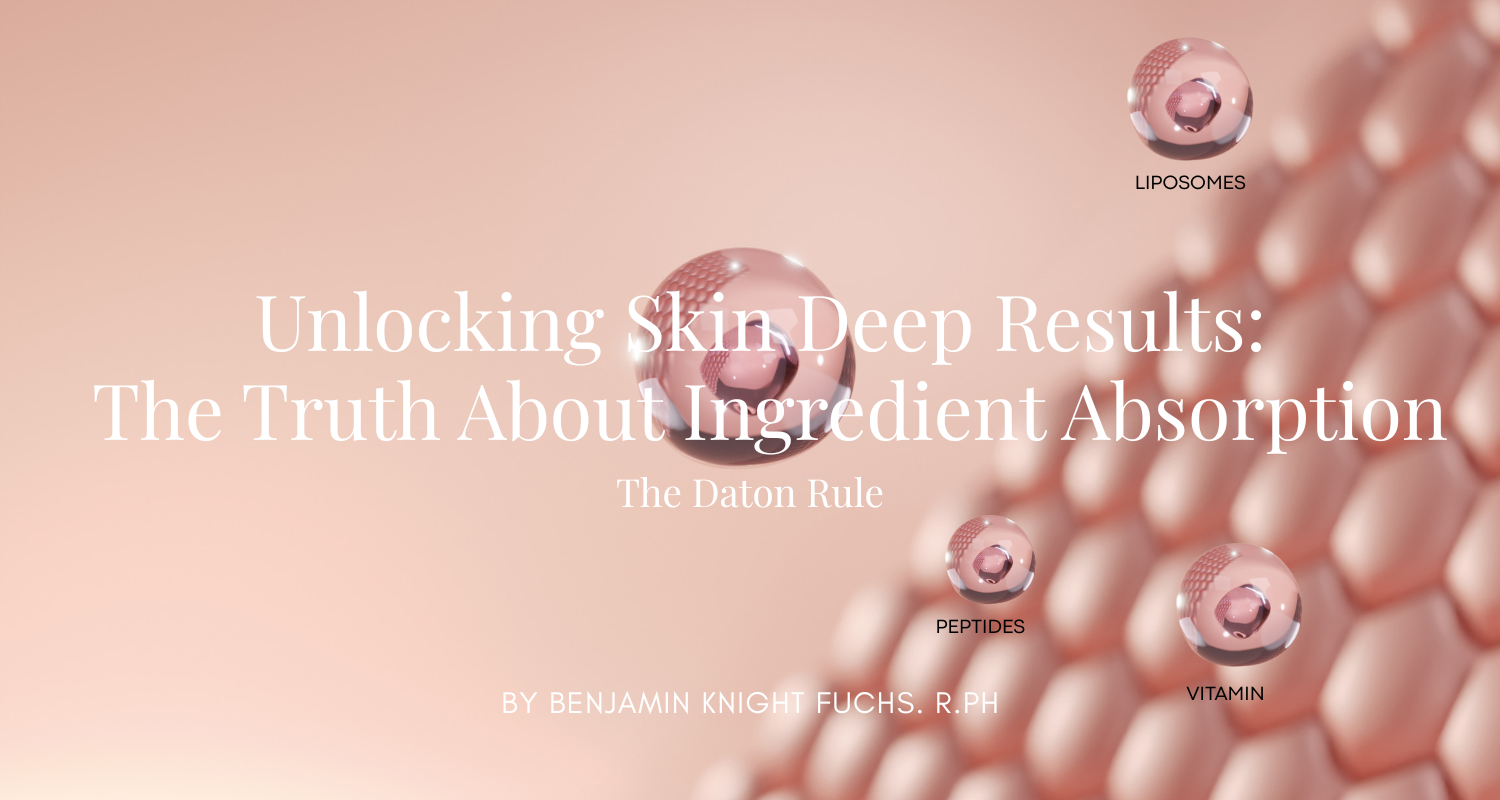
What Is the 500 Dalton Rule—and Why Should You Care?
More to Penetration than the 500 Dalton Rule
Think of your skin—especially the very top layer—as a gatekeeper. It's designed to protect you from the outside world, which means it doesn’t let just anything pass through. The 500 Dalton Rule is a helpful guideline to understand what might get through that gate.
Imagine molecules, the tiny building blocks of everything, as different-sized packages trying to be delivered into your skin. The 500 Dalton Rule essentially says that packages smaller than 500 Daltons (a measure of molecular size) are more likely to slip through the skin barrier on their own.
Smaller packages can move more easily through the tiny spaces between skin cells. That’s called passive diffusion—they naturally move from where there's a high concentration (your product) to where there's less (deeper in your skin).
But It’s Not the Only Rule: Other Factors That Help Ingredients Penetrate
The 500 Dalton Rule is a good starting point, but it’s not a strict law. Larger molecules can still penetrate under certain conditions. Here are the key factors that influence this:
1. Oil-Loving Nature (Lipophilicity)
Think of the skin's outer layer as having oil-based "walls". Ingredients attracted to oil (lipophilic) can dissolve into these walls and slip through more easily. Ideally, an ingredient shouldn't be too oily or too water-based—it needs a balance.
Like dissolves like!
2. Electrical Charge (Ionization)
Whether an ingredient has an electrical charge matters. The skin has a natural pH (acidity level), and this can alter an ingredient’s charge. Uncharged ingredients tend to penetrate better because they're more oil-loving.
3. Skin Friendliness (Compatibility)
Some ingredients may technically enhance penetration by irritating the skin—but that’s not the goal. Irritation compromises the skin barrier. A healthy skin barrier is always the target.
4. Concentration Power (Law of Diffusion)
Think of spraying perfume in a room: it starts concentrated but spreads out. Likewise, a higher concentration of an ingredient increases the likelihood of it penetrating, even if it’s larger.
5. "Helper" Ingredients (Penetration Enhancers)
Some ingredients are added specifically to help others penetrate. They might:
-
Loosen the skin’s outer layer
-
Improve solubility of the actives
Examples: Ethanol, certain acids, plant-derived oils
Delivery Systems: Think Tiny Taxis
These are like vehicles that transport active ingredients into the skin:
-
Liposomes: Tiny lipid bubbles encapsulating ingredients
-
Nanoemulsions: Tiny oil and water droplets for better mixing and delivery
-
Micelles: Like soap bubbles that capture oily ingredients and help transport them
Molecular Shape and Flexibility
Imagine ingredients as keys. Some keys fit better into locks than others. Flexible molecules may more easily "fit" through skin structures.
"Biosimilar" Molecules: Mimicking Nature
These are ingredients that closely resemble natural substances in your skin, making them more easily recognized and absorbed—even if larger than 500 Daltons.
Example: Vitamins & Their Derivatives
Some vitamins, though chemically modified, are effective because the skin recognizes them:
-
Vitamin A (Retinoids): Boosts cell turnover and collagen production
-
Vitamin D: Supports skin health and immune response
-
Vitamin E (Tocopherol): Antioxidant and barrier strengthener
-
Vitamin K: Helps with dark circles, bruising, and wound healing
These vitamins are fat-soluble, which makes them naturally more compatible with the skin’s oily outer layers. They're often formulated with:
-
Squalane
-
MCTs
-
Esters
-
Liposomes or nanoemulsions (for enhanced delivery)
What About Extracts?
Plant and herbal extracts contain many ingredients:
-
Smaller molecules (e.g., antioxidants): More likely to penetrate
-
Larger molecules (e.g., proteins): Less likely to go deep, but still beneficial on the surface
Even if a molecule doesn’t penetrate deeply, it can:
-
Hydrate
-
Protect
-
Interact with the surface
Sometimes, the synergy of multiple ingredients in an extract provides more benefit than any single component.
The Takeaway
The 500 Dalton Rule is a great reference—but it’s not the full story. Ingredient penetration depends on multiple factors:
-
Lipophilicity
-
Ionization
-
Compatibility with skin
-
Delivery systems
-
Formulation strategy
As an esthetician, it's important to understand that skincare is not just about penetration—it’s about working with the skin on a cellular level. Fat-soluble vitamins exemplify this by leveraging their oil-loving nature to deliver profound results.
Even larger molecules can sometimes bypass the 500 Dalton threshold when strategically formulated. With the right formula, the true potential of your skincare products can shine.


